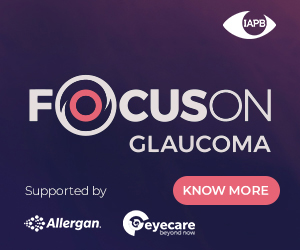Join a powerful, unprecedented alliance for better eye health for all.
Join IAPB-
Choose an alternate language here
For World Glaucoma Week, Mohammed Abdull on why is treating glaucoma with eye drops so difficult…
Glaucoma as a disease is usually only discovered following an eye check-up before onset of symptoms in most patients. Meaning there are many patients out there with the disease but not aware of it. Thus, it is important that at least the ones discovered should be prevented from going blind and this is a task which we take very seriously.
In our daily work we offer management options to patients on medical treatment, surgery or laser depending among others on:
Because of these factors a majority of patients end up being placed on medical treatment, typically eye drops where adherence to treatment becomes very important. But it is also a big problem in our glaucoma patients and a source of concern and sometimes frustration for us.
We always ask our patients if they are using their glaucoma medication? Most patients will answer yes even when that is not really the case. So, I found I get a better response when I ask, “when was the last time you used your medication?” The usual response is, it is some time ago, so I prompt how long ago? one month, one year or five days. Then I usually get the true answer. The next question is why have you stopped using your medicine? and the usual response is that the drug finished. Then why didn’t you get another one? Response, “because I didn’t know I should continue using, or because I feel better, so I don’t need it or because I feel no difference, or the drug is not working, etc. “

When the question of availability has been addressed comes the actual task of instilling the drug in the eyes. Many modern glaucoma medications have been formulated to be used once or twice a day, but there are still some medications that need to be taken multiple times a day. So, it follows that the more number of times needed to instil the medication or the more the number of medications needed, the less the chance that patients will abide by the regime.
If you consider the fact that these patients are mostly elderly with other morbidities the task becomes even more challenging as in addition to glaucoma medications they may also be on medication for hypertension, diabetes, arthritis or some other chronic medical condition because of their age. Where patients have a choice between drugs for life threatening conditions and drugs for sight threatening conditions, in most cases the choice is clear. Most will use their scant resources and effort for the most essential lifesaving medications meaning eye care takes second position. If you add the problems that come with increasing age such as joint stiffness, amnesia, poor coordination, tremors, and visual disability the act of instilling eye medications into the eye which seems so easy becomes even more difficult. In order to get just one good drop successfully to the eye, multiple drops need to be instilled so a bottle of medication that should last a month if used effectively often finishes within a couple of days. This increases the overall cost of treatment for the patients as they will need more to continue.
So, faced with all these problems what can we do to improve the patient’s adherence to medication. So many suggestions have been made in literature but there is no one solution that fits all. Communication between the physicians and the patients and their care givers are crucial. I find that involving care givers who are mostly spouses, relatives or friends, helps best to overcome the problems of acquisition and administration of medication. They help by procuring the right drug, keeping time to use and also instil effectively and with much economy.
Image on top: Discussing compliance with a patient by Abdull[/vc_column_text]